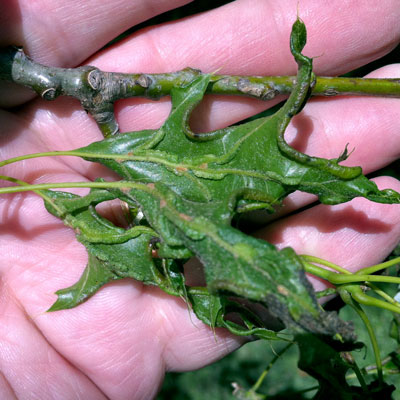Question of the Week: April 26, 2018
“Neil, what are these growths on my oak tree and what should I do about them?”

This is one of the less common types of galls that’s showing up on post oaks this spring.
These are insect galls, and they follow the sting and egg-laying of specific species of insects. There are hundreds of types of galls in oaks alone. What we’re seeing now are some of the early-season types.
The facts about oak galls…
It’s probably easiest to answer in short-form as I often do.
• These are all caused by insects. The adult females of various species sting plant tissues and lay their eggs in the leaves or twigs.
• The plants develop the gall tissues around the points where the eggs have been deposited.
• The eggs hatch and the larvae feed on the plant tissues within the galls.
• Eventually the larvae pupate, emerge as adult insects, fly off to mate and begin the cycle again.

Vein pocket gall on Shumard red oak

Woody oak gall on live oak

Wooly oak gall on fallen leaf of post oak
• There are actually scores of different species of gall-forming insects that are found in oaks alone. Each one is specific to one species (or a small number of species) of oak(s).
• Most importantly: The galls do no major damage to your trees.
• That’s good news, because there is no cure or prevention for them. As an entomologist friend of mine once advised me, “You might as well brag about them.” (Thank you, H.A. Turney, for that quote that I’ve used for 47 years!)
So now you have the true facts on oak galls and you are hereby freed to worry about something else. Let me know if you need any suggestions.
